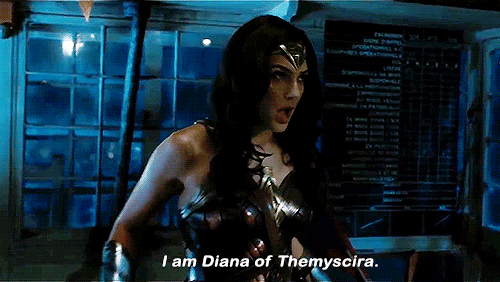3X GRAMMY AWARD-WINNING BAND | PARAMORE 66th Annual Grammy Awards



3X GRAMMY AWARD-WINNING BAND | PARAMORE 66th Annual Grammy Awards
+ bonus: first female fronted band in history to win best rock album
More Posts from Dynamic-light-scattering and Others
me talking abt my fave tv shows to myself

“Natalie Portman will be revealed as Lady Thor and Valkyrie is gonna find her queen”
Taika in that moment:

Correction: SHE IS THOR!! THE MIGHTY THOR!!!!
Crying in the club


Star Wars: The Rise of Skywalker






UEFA Women's Champions League Portraits: Christiane Endler
📷 : Aurelien Meunier - UEFA/UEFA via Getty Images
This woman


shit.






THE LAST OF US PART II: MINIMAL POSTERS



#well mark me down as scared and h*rny



Wonder Woman (2017) Captain Marvel (2019) Birds of Prey (2020)

2019 September 19
Along the Western Veil Image Credit & Copyright: Min Xie
Explanation: Delicate in appearance, these filaments of shocked, glowing gas, are draped across planet Earth’s sky toward the constellation of Cygnus. They form the western part of the Veil Nebula. The Veil Nebula itself is a large supernova remnant, an expanding cloud born of the death explosion of a massive star. Light from the original supernova explosion likely reached Earth over 5,000 years ago. Blasted out in the cataclysmic event, the interstellar shock wave plows through space sweeping up and exciting interstellar material. The glowing filaments are really more like long ripples in a sheet seen almost edge on, remarkably well separated into atomic hydrogen (red) and oxygen (blue-green) gas. Also known as the Cygnus Loop, the Veil Nebula now spans nearly 3 degrees or about 6 times the diameter of the full Moon. While that translates to over 70 light-years at its estimated distance of 1,500 light-years, this telescopic image of the western portion spans about half that distance. Brighter parts of the western Veil are recognized as separate nebulae, including The Witch’s Broom (NGC 6960) along the top of this view and Pickering’s Triangle (NGC 6979) below and left.
∞ Source: apod.nasa.gov/apod/ap190919.html

The first image ever taken of a supermassive black hole
For the first time ever, humanity can gaze at an actual photograph of a supermassive black hole. It’s an achievement that took supercomputers, eight telescopes stationed on five continents, hundreds of researchers, and vast amounts of data to accomplish. The results from this project were announced today.
Photo credit: The Event Horizon Telescope
-
 scoobiedootwentytwo liked this · 2 weeks ago
scoobiedootwentytwo liked this · 2 weeks ago -
 ninja8cookiez liked this · 4 weeks ago
ninja8cookiez liked this · 4 weeks ago -
 moonysstarrs liked this · 1 month ago
moonysstarrs liked this · 1 month ago -
 readwriteannplay reblogged this · 1 month ago
readwriteannplay reblogged this · 1 month ago -
 iburpbabies liked this · 2 months ago
iburpbabies liked this · 2 months ago -
 sowhatdoyougonnado liked this · 2 months ago
sowhatdoyougonnado liked this · 2 months ago -
 chickenfriednoodles-blog liked this · 2 months ago
chickenfriednoodles-blog liked this · 2 months ago -
 stars--and--scars liked this · 3 months ago
stars--and--scars liked this · 3 months ago -
 chastainromanova reblogged this · 3 months ago
chastainromanova reblogged this · 3 months ago -
 jflemings liked this · 3 months ago
jflemings liked this · 3 months ago -
 vampsan liked this · 3 months ago
vampsan liked this · 3 months ago -
 the-fandom-abyss reblogged this · 4 months ago
the-fandom-abyss reblogged this · 4 months ago -
 melthemoon liked this · 4 months ago
melthemoon liked this · 4 months ago -
 richonneforever liked this · 4 months ago
richonneforever liked this · 4 months ago -
 starmage-constellar liked this · 4 months ago
starmage-constellar liked this · 4 months ago -
 saudadeja liked this · 4 months ago
saudadeja liked this · 4 months ago -
 introspectiveblob liked this · 4 months ago
introspectiveblob liked this · 4 months ago -
 theconstellationofstars liked this · 4 months ago
theconstellationofstars liked this · 4 months ago -
 sunki11er reblogged this · 4 months ago
sunki11er reblogged this · 4 months ago -
 sunki11er liked this · 4 months ago
sunki11er liked this · 4 months ago -
 gonzogonzogonzo13 liked this · 4 months ago
gonzogonzogonzo13 liked this · 4 months ago -
 inside-mp4 reblogged this · 5 months ago
inside-mp4 reblogged this · 5 months ago -
 grandtheftautumn reblogged this · 5 months ago
grandtheftautumn reblogged this · 5 months ago -
 samimjo liked this · 5 months ago
samimjo liked this · 5 months ago -
 justwanttobefound reblogged this · 5 months ago
justwanttobefound reblogged this · 5 months ago -
 justwanttobefound liked this · 5 months ago
justwanttobefound liked this · 5 months ago -
 brightplvces liked this · 5 months ago
brightplvces liked this · 5 months ago -
 lunarcr0ssing reblogged this · 5 months ago
lunarcr0ssing reblogged this · 5 months ago -
 nintendo-switch-2 reblogged this · 5 months ago
nintendo-switch-2 reblogged this · 5 months ago -
 ophyliakilledhamlet reblogged this · 5 months ago
ophyliakilledhamlet reblogged this · 5 months ago -
 horton-hears-a-doctor-who liked this · 6 months ago
horton-hears-a-doctor-who liked this · 6 months ago -
 shooting-star-81 reblogged this · 6 months ago
shooting-star-81 reblogged this · 6 months ago -
 shooting-star-81 liked this · 6 months ago
shooting-star-81 liked this · 6 months ago -
 scrumptiouslyunknown liked this · 6 months ago
scrumptiouslyunknown liked this · 6 months ago -
 synneful liked this · 6 months ago
synneful liked this · 6 months ago -
 0jai0 liked this · 6 months ago
0jai0 liked this · 6 months ago -
 shipandrunforit liked this · 6 months ago
shipandrunforit liked this · 6 months ago -
 crying-is-your-latest-fashion liked this · 6 months ago
crying-is-your-latest-fashion liked this · 6 months ago -
 knightsf liked this · 6 months ago
knightsf liked this · 6 months ago -
 unitato-equals-love liked this · 6 months ago
unitato-equals-love liked this · 6 months ago -
 justineangelrococo liked this · 6 months ago
justineangelrococo liked this · 6 months ago -
 nahprobsnot reblogged this · 6 months ago
nahprobsnot reblogged this · 6 months ago -
 sicklylittleguy liked this · 6 months ago
sicklylittleguy liked this · 6 months ago -
 astheskycries liked this · 6 months ago
astheskycries liked this · 6 months ago -
 ihopishappy liked this · 6 months ago
ihopishappy liked this · 6 months ago -
 ghostsdemon liked this · 6 months ago
ghostsdemon liked this · 6 months ago -
 dreezzle liked this · 6 months ago
dreezzle liked this · 6 months ago
